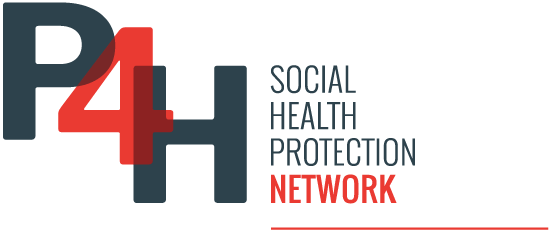India’s tobacco governance reveals a stark contradiction, as the government collects over Rs 75,000 crore in tobacco taxes yet allocates less than Rs 50 crore annually to tobacco control programs, resulting in a chronic underfunding of health initiatives. This economic entrenchment of the tobacco industry perpetuates exploitation of workers and prioritizes revenue generation over public health, leading to substantial health and economic costs for the nation.
India’s relationship with tobacco represents a profound policy contradiction within public health governance. The Indian government collects over Rs 75,000 crore annually in tobacco taxes but allocates a mere Rs 50 crore—or less than 0.07 percent of this revenue—to its National Tobacco Control Programme. This stark contrast underscores a system where financial interests overshadow health objectives, ensuring that tobacco control efforts remain severely underfunded despite the substantial revenue generated. The funding trajectory for tobacco control over the years tells a story of persistent neglect.
From 2014-15 to 2022-23, the budgetary allocation for tobacco control showed significant fluctuations, ranging from a high of Rs 84 crore to a low of Rs 13 crore. Ultimately, the total funding across this decade amounted to just Rs 463 crore, which is a tiny fraction of what tobacco taxation generates monthly. In a troubling move, since 2023, the government has further obscured accountability by integrating tobacco control funding into the broader “Tertiary Care Programme.” This strategy complicates the ability to track investments dedicated to tobacco control and suggests a deliberate shift away from measurable health outcomes.
As tobacco control funding dwindles, the tobacco industry continues to prosper in India, positioning the country as the world’s second-largest consumer of tobacco, following China. Approximately 267 million users account for nearly 19 percent of global tobacco consumption. By May 2021, around 20 million farm laborers were engaged in the tobacco industry, which supports about 45.7 million people through direct and indirect employment. The cigarette market alone is projected to reach $14 billion (Rs 1.162 lakh crore). Such figures provide powerful economic narratives that politicians and policymakers find challenging to contest, particularly when significant tax revenues are involved. This deep entrenchment of tobacco in the economy creates a troubling incentive structure.
With tobacco taxation constituting 2.9 percent of India’s gross revenues and sustaining millions of jobs, the government develops a vested interest in maintaining tobacco consumption levels. The grim reality is that disease prevention takes a back seat to revenue generation. While officials may promote taxation as a deterrent to smoking, the minimal investment in cessation programs reveals a contrary narrative, indicating that the state is financially reliant on ongoing tobacco use to support other governmental priorities.
A concerning aspect of this issue is the disparity in regulatory treatment between cigarettes and other tobacco products. Cigarettes face relatively higher taxes, while bidis and smokeless tobacco—which account for 81 percent of total tobacco consumption—receive preferential treatment through tax exemptions and regulatory loopholes. The bidi industry, employing millions of rural workers, is often shielded from stringent regulations under the pretext of protecting livelihoods. However, this argument obscures systemic exploitation where workers earn as little as Rs 100 for rolling 700 bidis while the industry owners accumulate significant wealth.
The working conditions in these industries starkly illustrate the hypocrisy behind the “livelihood protection” argument. Women rolling bidis commonly work from poorly ventilated homes, where they inhale tobacco dust for hours, leading to respiratory issues and other ailments. Many become nicotine-dependent due to skin absorption. Moreover, children often assist in this labor, exposing themselves to health hazards from a young age.
The government’s defense of worker protection through lenient regulations ultimately perpetuates exploitation and enriches industry owners who benefit from tax exemptions designed for “small manufacturers”—a status that is frequently manipulated through the use of shell companies to fragment larger operations.
Furthermore, the smokeless tobacco and pan masala industries exploit regulatory loopholes as well. For example, the ban on gutkha in many states is rendered ineffective through the so-called “twin-pack strategy,” which allows manufacturers to sell pan masala and tobacco separately for consumers to combine later. This approach enables the industry to circumvent regulations while generating minimal tax revenue despite widespread use. Enforcement efforts against these practices tend to be sporadic and ineffective, with clandestine factories operating without oversight in numerous regions, further undermined by corruption. The consequences of these policy failures are dire.
Tobacco-related diseases result in nearly 1.3 million deaths in India each year. The economic burden of these health issues was estimated to be Rs 1.77 lakh crore in 2017-18, which is approximately 1 percent of India’s GDP—far exceeding the combined health expenditures of both state and central governments for that year. Despite the staggering number of tobacco users, cessation services reached only 1.3 million of the country’s 274 million users in 2019-20, and even fewer during the COVID-19 pandemic.
This glaring inequity in health service access reflects a chronic inadequacy of funding directed toward tobacco control efforts. In summary, India’s tobacco governance exemplifies a significant conflict in public health policy. While the government undeniably benefits from the considerable tax revenues generated by tobacco consumption, its investment in health initiatives aimed at reducing tobacco use remains minimal, ultimately prioritizing financial gain over the health of its citizens. The exploitation within the tobacco industry, particularly towards vulnerable workers, adds another layer to this complex issue, demonstrating the urgent need for comprehensive policy reform that genuinely prioritizes public health and well-being.


